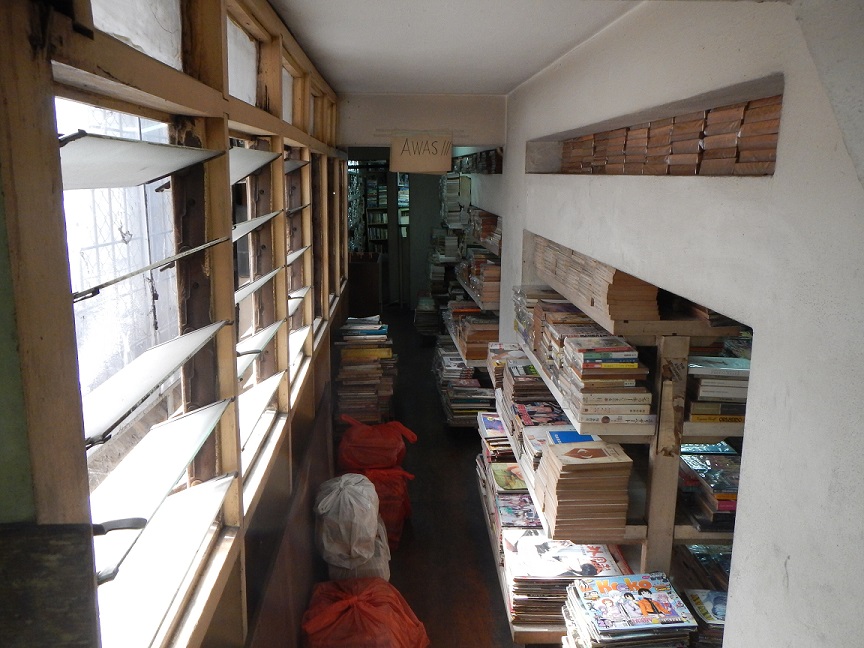The easiest way to begin to apprehend the rich and complex relation between memory, the self and literature is through rereading books, particularly those we first read in childhood. The distance between the reader’s adult and childhood selves becomes apparent, tangible, but carries with it a sense of connection and continuity submerged in the concerns of everyday life. In reawakening the sensations first evoked years ago, the reader is reminded of who they once were in remembering what drew them to these texts, what they learnt from them, and how they have guided them towards becoming someone else.
On 17th October 2013, the Memory Network’s co-organiser Alison Waller was hosted by City University New York to talk about her research on remembering childhood books. She was joined by two memory experts – photographer Dimitri Mellos and Professor of French Literature Evelyne Ender – for a panel discussion about what the arts can tell us about how and why we remember. Central to the evening’s debate was the status of the memory stimulus: whether that trigger is the text that was significant to an earlier reading self, the photograph taken to fix a certain moment in time, or the sweet madeleine dipped in a jasmine infusion.
Waller considered the material and emotional resonances of printed books as primers for remembered childhood experience. Starting with an episode from the last volume of Marcel Proust’s À La Recherche du Temps Perdu in which the narrator is startled into a recollection of the past through his encounter with a copy of George Sand’s 1848 novel François le Champi, she set out an account of affective memory as it can be traced through childhood autobiography. Her argument focused on loving relationships between the adult rememberer, the book, and the reading child, acknowledging the complex of contextual information that influences the memories of a reading experience.
Mellos provided a valuable overview of memory studies, developing the theory put forward by thinkers such as Ulrich Neisser and Daniel Schacter that memory is a reconstructive process built on the dual features of memory cue and memory trace, or engram. He used this framework to deconstruct the commonsense understanding of photographs as a representation of reality, pointing to the conventions of personal photography that urge subjects on holiday to smile inanely in front of well-known landmarks. Mellos argues that the true nature of such photographs corresponds to Freud’s notion of the screen memory: they act to prevent us engaging with the real emotional complexity of experience; moreover, they also help promote an idea that our memories might similarly fixed, retrievable, and safe to view.
Ender spoke about her long interest in the way the workings of the mind are elucidated in literature. Her research has combined analysis of literary writers such as Proust and historical enquiry into the science of ‘Proustian memory,’ particularly in the new neuropsychology of thinkers like Oliver Sacks. She argued that there are still many mysteries surrounding memory to be considered and that we might all appreciate the great many words Proust had to employ to describe his own thought experiment and the years it took for his philosophical research into the sense of time in human experience to emerge.
Ender noted with humour that when she first began exploring the links between artistic and scientific explorations of the workings of human memory she was still just able to keep up with scientific journal articles in the field, a task she finds impossible today. This interdisciplinary enthusiasm was also clear from the audience, which was made up of staff, students and interested individuals from diverse disciplines and backgrounds, and covered topics of false memory, the role of narrative and writing in remembering, sensory triggers, trauma and ethics. The event was part of Hunter College’s ‘Arts Across the Curriculum’ programme, which aims to introduce the arts into “non-arts” disciplines, and engage with the New York arts community. Thanks go to CUNY and Hunter College for organising the evening, particularly Evelyne Ender and the Arts Across the Curriculum Director, Professor Rebecca Connor. You can listen to a recording of the panel speakers here:
Where better to explore the complex relationships between memory and narrative than at Oxford’s Story Museum? On 14 May 2014, Alison Waller (University of Roehampton) was joined by literary historian Diane Purkiss (Keble College, Oxford) and psychologist James Ost (University of Portsmouth) to talk about the intersections of research into memory and storytelling, as part of the Memory Network’s series of interdisciplinary public events. The panel discussed what adults remember about books read in childhood, the role of memory in emotionally-charged creative acts of writing, and how far eye-witness statements can be trusted in the light of studies into the psychology of memory.
Since the event took place alongside the Story Museum’s wonderful ’26 Characters’ exhibition, which shows many of Britain’s best loved writers and storytellers transformed into the characters they most loved as children, debate touched on the remembered reading and writing practices of individuals who might be called creators of literature read by young people (C. S. Lewis, Alan Garner, Andrew Lang). The speakers asked how stories themselves are shaped in and by the memory, and how affective forces might play a part in this process. Purkiss’s analysis of the manuscripts of Garner and Hemmingway offered some stimulating insights into the ways that post-traumatic stress and other syndromes linked to memory can be represented in the physical marks of authorship. Waller traced an impassioned relationship with Beatrix Potter’s classic picturebook Squirrel Nutkin, which features prominently in Lewis’s autobiographical writings as an example of remembered story, and resembles many accounts of remembered reading by adults in its contextualisation through a meaningful moment of childhood experience. Ost demonstrated psychology’s growing interest in story as a way of understanding memory as a cognitive process, and argued that autobiographical memory is best understood as a reconstructive, active, and context-dependent process: a conclusion that demands a cautious approach to using remembered witness accounts in serious court cases.
Although the panel’s interests were diverse, they found common ground in a fascination with the early psychological experiments of Frederic Bartlett, who published his famous work, Remembering: a Study in Experimental and Social Psychology in 1932. Bartlett’s publication was important for many reasons, including the fact that it marked a crucial challenge to existing laboratory-based empirical studies into memory, but it is perhaps Bartlett’s material for testing types of recollection and familiarity that is most striking. Alongside line-drawings and textbook extracts, he provided short folk tales for his subjects to read and then reproduce, after periods of time between 15 minutes and several years. His participants often retold parts of the unfamiliar tale with dramatic errors, which then became part of the memory of that story then next time they were asked to remember. Analysing the sequences of retellings, Bartlett found he could suggest that long-term memory is not stored accurately or statically, but that remembering is an active process requiring us to make an effort after meaning.
One of the stories used by Bartlett is a North American folk tale adapted from a translation by Dr Franz Boas, called ‘The War of the Ghosts,’ selected by Bartlett for its exotic distance from the cultural and social environment of his experimental subjects (who on the whole were his Cambridge students). During the ‘Remembering Stories’ event, the audience were invited to take part in a re-staging of the experiment, opening with a reading of ‘The War of the Ghosts’ and then testing their memory of it at the end of the panel. The majority were remarkably good at recall, hardly transforming the tale at all; but then again they had spent the evening immersed in stories. You can try out the experiment yourself by reading the story here: http://penta.ufrgs.br/edu/telelab/2/war-of-t.htm

